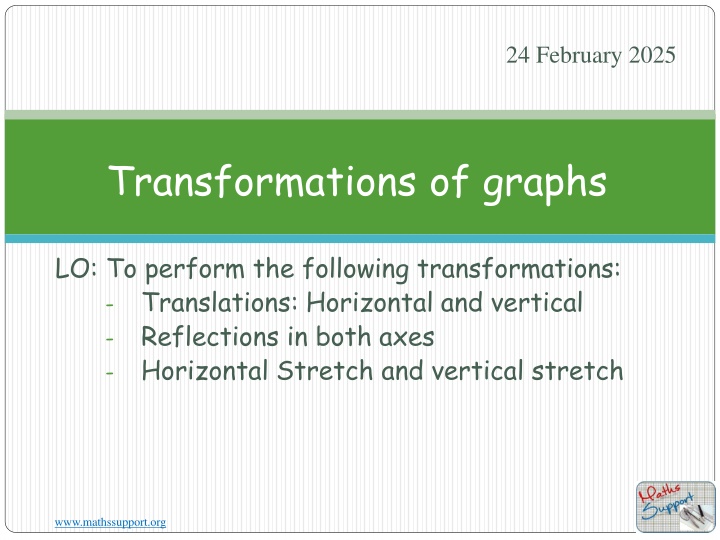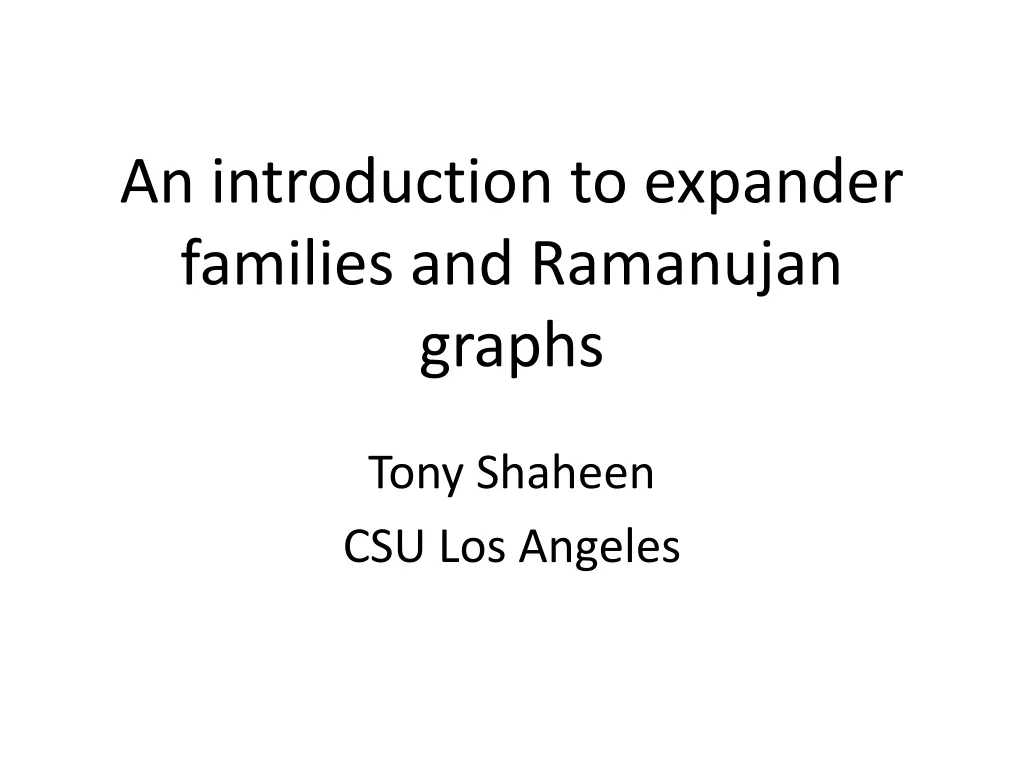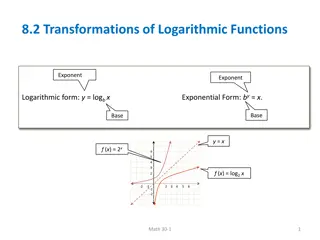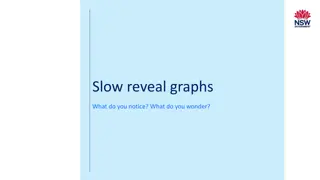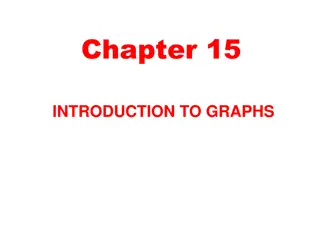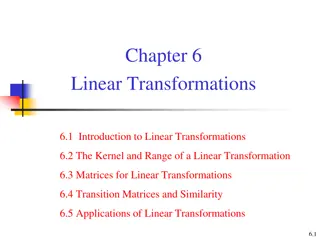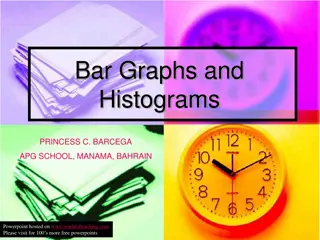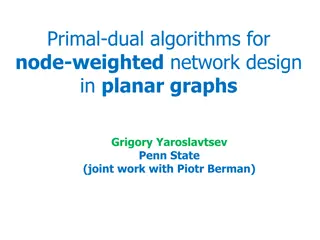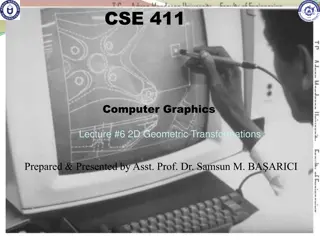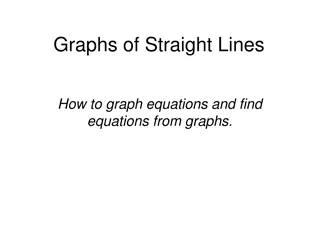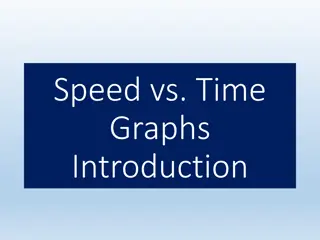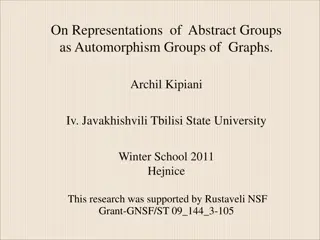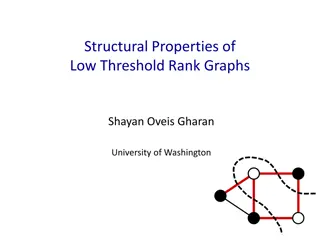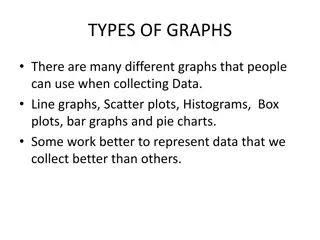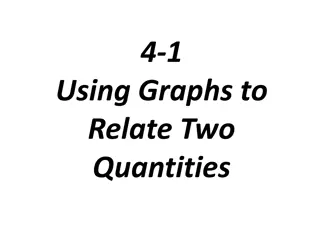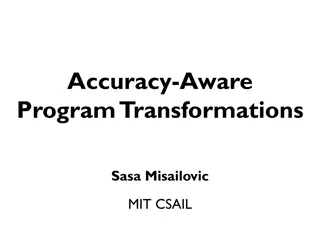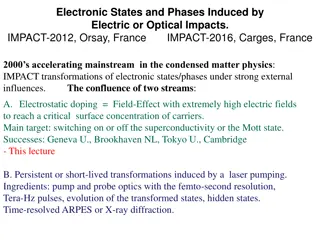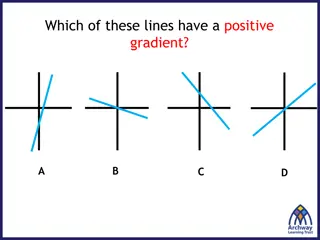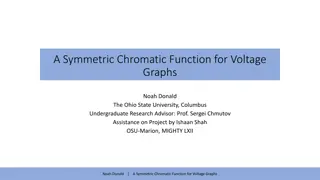Transformations of graphs
The transformations of graphs including translations, reflections, and stretches. Understand the impact of constant terms on the graphs and learn to sketch transformed functions using your graphing calculator.
Download Presentation

Please find below an Image/Link to download the presentation.
The content on the website is provided AS IS for your information and personal use only. It may not be sold, licensed, or shared on other websites without obtaining consent from the author.If you encounter any issues during the download, it is possible that the publisher has removed the file from their server.
You are allowed to download the files provided on this website for personal or commercial use, subject to the condition that they are used lawfully. All files are the property of their respective owners.
The content on the website is provided AS IS for your information and personal use only. It may not be sold, licensed, or shared on other websites without obtaining consent from the author.
E N D
Presentation Transcript
24 February 2025 Transformations of graphs LO: To perform the following transformations: - Translations: Horizontal and vertical - Reflections in both axes - Horizontal Stretch and vertical stretch www.mathssupport.org
Transforming functions Graphs can be transformed by translating, reflecting, stretching or rotating them. The equation of the transformed graph will be related to the equation of the original graph. When investigating transformations, it is most useful to express functions using function notation. For example, suppose we wish to investigate transformations of the function f(x) = x3. The equation of the graph of y = x3, can be written as y = f(x). www.mathssupport.org
Use your GDC to sketch the following graphs: If = f (x) y = x2 y = x2+ 1 = f (x) ( ) + 1 f (x) is translated 1 unit upward = f (x) ( y = x2 + 2. y = x2 2. ) = f (x) + 2 ( ) 2 f (x) is translated 2 units upward f (x) is translated 2 units downward Compare your functions What effect do the constant terms have on the graphs? f (x) + k translates f (x) vertically a distance of k units upward f (x) k translates f (x) vertically a distance of k units downward www.mathssupport.org
Vertical translations Here is the graph of f (x). Sketch the graph of f (x) + 1. y 4 f (x) + 1 What do you notice? 3 The graph of f (x) has been translated 1 units upward. 2 1 The graph of f(x) + k is the graph of f(x) translated vertically a distance of k units upwards. 2 -1 1 x -2 -1 f (x) -2 -3 We can say that has been translated by the vector -4 0 k www.mathssupport.org
Vertical translations Here is the graph of f (x). Sketch the graph of f (x) - 1. y 4 What do you notice? 3 f (x) The graph of f (x) has been translated 1 units downward. 2 1 The graph of f(x) - k is the graph of f(x) translated vertically a distance of k units downward. 2 -1 1 x -2 -1 -2 f (x) - 1 -3 We can say that has been translated by the vector -4 0 -k www.mathssupport.org
Use your GDC to sketch the following graphs: If = f (x) y = (x+ 2)2 )2 y = x2 = f (x ) ( + 2 f (x) is translated 2 units to the left )2 y = (x 2)2 y = (x 4)2 ( )2 = f (x ) ( = f (x ) 2 4 f (x) is translated 4 units to the right f (x) is translated 2 units to the right Compare your functions What effect do the constant terms have on the graphs? f (x + k) translates f (x) horizontally k units to the left f (x k ) translates f (x) horizontally k units to the right. www.mathssupport.org
Horizontal translations Here is the graph of f (x). Sketch the graph of f (x + 2) y 4 What do you notice? 3 The graph of f (x) has been translated 2 units to the left. 2 f (x + 2) 1 The graph of f(x + h) is the graph of f(x) translated horizontally a distance of k units to the left. 2 -1 1 x -2 -1 f (x) -2 -3 We can say that has been translated by the vector -4 -h 0 www.mathssupport.org
Horizontal translations Here is the graph of f (x). Sketch the graph of f (x 1). y 4 What do you notice? 3 f (x) The graph of f (x) has been translated 1 units to the right. 2 1 The graph of f(x h) is the graph of f(x) translated horizontally a distance of k units the right. 2 -1 1 x -2 -1 f (x - 1) -2 -3 We can say that has been translated by the vector -4 h 0 www.mathssupport.org
Use your GDC to sketch the following graphs: If = f (x) y = (x3+ 1) ( ) y = x3 + 1 = f (x) f (x) is reflected in the x-axis ) y = ( x)3 + 1 ( = f ( x) f (x) is reflected in the y-axis Compare your functions What effect do the signs have on the graphs? f ( x) reflects f (x) in the y-axis f (x) reflects f (x) in the x-axis. www.mathssupport.org
Reflections Here is the graph of f (x). Sketch the graph of f (x) y 4 What do you notice? 3 - f (x) 2 The graph of f (x) has been reflected over the x-axis. 1 2 -1 1 x -2 -1 The graph of f(x) is the reflection of the graph f(x) in the x-axis. f (x) -2 -3 -4 www.mathssupport.org
Reflections Here is the graph of f (x). Sketch the graph of f ( x). y 4 What do you notice? 3 f (x) f ( x) 2 The graph of f (x) has been reflected over the y-axis. 1 2 -1 1 x -2 -1 -2 The graph of f( x) is the reflection of the graph f(x) in the y-axis. -3 -4 www.mathssupport.org
Use your GDC to sketch the following graphs: y = 1 = 1 ) ( 2(x2 1) = 2( f (x)) 2(f (x)) y = 2(x2 1) ( ) y = x2 1 = f (x) If f (x) is stretched vertically, scale factor 1 f (x) is stretched vertically, scale factor 2 2 2 1 = ? 1 2? 1 2? ) ) ( y = (2 x)2 1 ( y = = f (2x) f (x) is stretched horizontally, scale factor 1 f (x) is stretched horizontally, scale factor 2 2 Compare your functions What effect do the constant terms have on the graphs? pf (x) stretches f (x) vertically with scale factor p f (qx) stretches f (x) horizontally with scale factor 1 ? www.mathssupport.org
Stretches Here is the graph of f (x). What do you notice? The graph of f (x) has been stretched or compressed horizontally with scale factor . Sketch the graph of f (2x). 1 2 y 4 f (2x) The graph of f(qx) stretches or compresses f(x) horizontally with scale factor . 1 q 3 f (x) 2 1 2 -1 1 x -2 The transformation is a horizontal stretch of scale factor . When q > 1 the graph is compressed towards the y-axis. When 0 < q < 1 the graph is stretched away from the y-axis. -1 1 q -2 -3 -4 www.mathssupport.org
Stretches Here is the graph of f (x). What do you notice? The graph of f (x) has been stretched or compressed vertically with scale factor 2. Sketch the graph of 2f (x). y 4 2f (x) The graph of 2f(x) stretches or compresses f(x) vertically with scale factor 2. 3 2 1 2 -1 1 x -2 The transformation is a vertical stretch of scale factor p. When p > 1 the graph is stretched away from the x-axis. When 0 < p < 1 the graph is compressed towards the x-axis. -1 -2 f (x) -3 -4 www.mathssupport.org
Example 1. y 8 7 Here is the graph of f (x). 6 5 4 Sketch the graph of: 3 f (x + 2) f (x) 2 f (x + 2) 1 1 2 3 4 5 6 7 7 6 5 4 3 2 1 x -1 -2 -3 -4 -5 -6 www.mathssupport.org
Example 2. y 8 7 Here is the graph of f (x). 6 5 Sketch the graph of: 4 3 f (x) 2 f (x) 3 1 x 1 2 3 4 5 6 7 f (x ) 3 7 6 5 4 3 2 1 -1 -2 -3 -4 -5 -6 www.mathssupport.org
Example 3. y 8 7 Here is the graph of f (x). 6 5 4 Sketch the graph of: 3 f (x) f ( x ) 2 f ( x) 1 x 1 2 3 4 5 6 7 7 6 5 4 3 2 1 -1 -2 -3 -4 -5 -6 www.mathssupport.org
Example 4. y 8 Here is the graph of f (x). 7 6 5 4 Sketch the graph of: 3 f (x) 2 f (x) 1 1 2 3 4 5 6 7 7 6 5 4 3 2 1 x -1 -2 f (x ) -3 -4 -5 -6 www.mathssupport.org
Example 5. y 8 Here is the graph of f (x). 2f (x ) 7 6 5 Sketch the graph of: 4 3 2f (x) f (x) 2 1 1 2 3 4 5 6 7 7 6 5 4 3 2 1 x -1 -2 -3 -4 -5 -6 www.mathssupport.org
Example 6. Here is the graph of f (x). y 8 7 f (2x ) 6 Sketch the graph of: 5 4 3 f (2x) f (x) 2 1 x 1 2 3 4 5 6 7 7 6 5 4 3 2 1 -1 -2 -3 -4 -5 -6 www.mathssupport.org
Thank you for using resources from A close up of a cage Description automatically generated For more resources visit our website https://www.mathssupport.org If you have a special request, drop us an email info@mathssupport.org www.mathssupport.org
